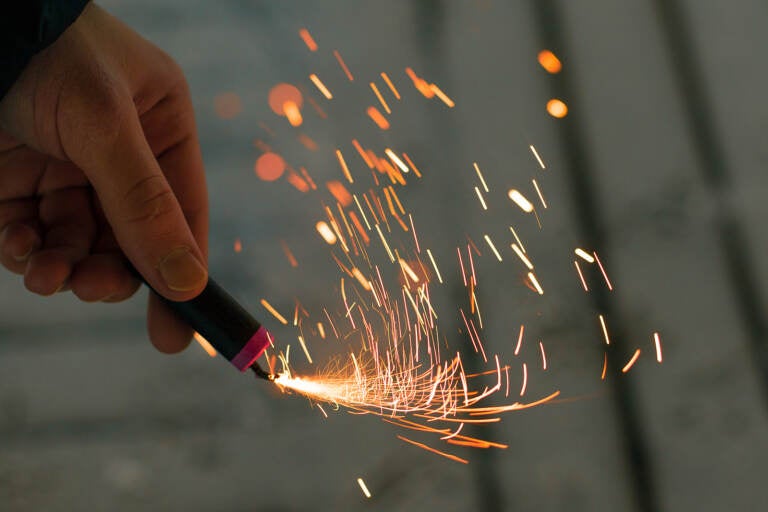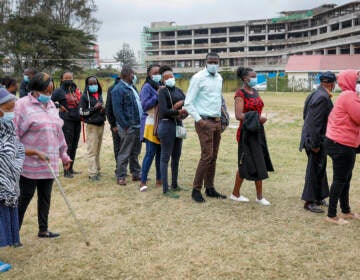Even the smallest of fireworks can cause serious burns. A Philadelphia ER doctor explains what to do for July 4 mishaps
About 73% of all firework-related injuries nationally occur in the two weeks before and after the Fourth of July.

(InfinitumProdux/BigStock)
The colorful bursts of fireworks in the sky can be a fun way to mark the Fourth of July holiday – and safe, too, when you’re watching hundreds or thousands of yards away from the launch point.
It’s when people go to set off their own fireworks in the backyard that things tend to go wrong, and injuries ensue.
Every year, Dr. Lauren Carr treats these patients in the emergency room at St. Christopher’s Hospital for Children in Philadelphia, which has one of the largest pediatric burn centers in the region.
“Everybody who’s worked [here] for a little while has their own anecdote about a significant injury that they saw,” she said. “Whether it’s a child who lost vision in one eye, or I personally had a child who lost several fingers from a blast injury that I took care of.”
Nationally, more than 10,000 people last year went to a hospital for a fireworks-related injury, according to a new U.S. Consumer Product Safety Commission report. And a majority of those cases happened in the two weeks before and after the Fourth of July.
Medical experts said there are easy ways to avoid these types of injuries, and if they do occur, there are steps families can take to get the right medical treatment.
“It’s a very quintessential July 4th thing to hand a child a sparkler and have them walk around during the holiday,” Carr said. “But sparklers actually burn at a temperature hot enough to melt metal, so those can cause some pretty significant injuries.”
Most firework injuries involve burns. To determine if a burn needs professional medical attention, Carr said people want to consider two things: location and size.
“What we tell people is if it’s bigger than the size of the person’s palm, then it’s something that should get looked at,” she said.
Burns and injuries to the face, eyes, and ears, as well as extremities like the hands, fingers, feet, and genitals, may also require a trip to an urgent care facility or hospital.
“If it surrounds an entire limb, what we call circumferential, if it wraps all the way around, that’s something that we want to get a good look at,” Carr said. “Because the risk of swelling and infection is a lot higher when it wraps around an entire extremity.”
Carr said it’s always a good idea to have an adult around who has not been drinking alcohol or taking any drugs, who can quickly get someone to medical care for serious injuries.
Most people who do end up in the hospital for a fireworks-related incident get treatment and go home. More serious cases can involve skin grafts or rehabilitation.
But many minor burns can be treated at home. Carr recommended people run the burn under cool water — not ice cold — for five to 20 minutes, and then apply a clean, dry dressing to the area.
Carr warned families against using oils, creams, or moisturizers in the immediate aftermath of an injury, because “using things like that can increase the risk of infection down the road.”
She instead suggested using aloe vera gel and bacitracin antibiotic ointment.
To avoid fireworks injuries altogether, Carr said people can always invest in non-firework alternatives to celebrate the holiday, especially with children around.
“You can use glow sticks, you can use confetti or silly string or noisemakers — other things that are very dazzling to a young child’s eye that aren’t quite as dangerous,” she said.
WHYY is your source for fact-based, in-depth journalism and information. As a nonprofit organization, we rely on financial support from readers like you. Please give today.





